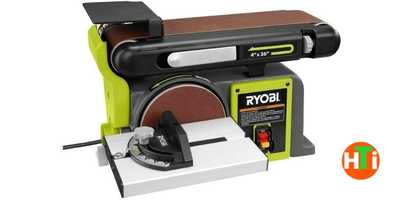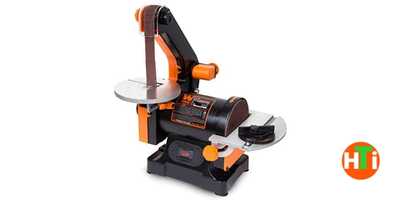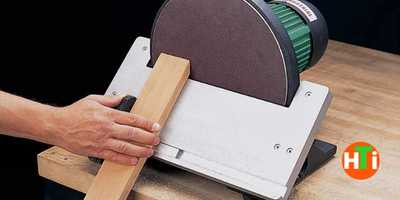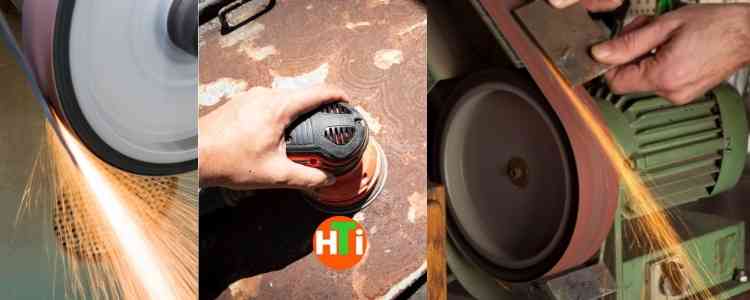1. Can you use an electric sander on metal?
Yes! You can use an electric sander on metal. But, there are several electric sanders for metal sanding- what should you use? We recommended using an electric orbital sander on metal to sand.
Generally, people use a sander on metal to get rid of rust, remove old color and smooth the extensive edge and surface of the metal. For this purpose, the orbital sander is the best solution.
An electric orbital sander is engineered with a speed-reducing system, so it’s not as aggressive as the belt sander or grinders. Besides, it has circular movement to remove rust and extensive edges from metal. You can do your work comfortably. It’s a perfect heavy-duty sander tool for metal sanding and will make it easy and reduce your effort to complete tasks like shaping, carving, or polishing.
2. Can you sand metal with a belt sander?

You can sand metal with a belt sander but there are some precautions and instructions to follow. Belt sanders are not that many heavy tools to do heavy metalwork. You can do small work like edge finishing or knife sharpening with that belt sander. For heavy metalwork, it is always recommended to use a heavy electric sander like an orbital sander.
The belt sander creates sparks while you sand metal with a belt sander, which may cause a fire. Sparks from the belt sander can start a fire if it gets in touch with the sawdust and the dust bag. So, keep your dust bag away from the belt sander and vacuum all sawdust before sanding metal with a belt sander.
3. Which items should never be used on a belt sander?
The belt sander is an effective sanding tool for sanding wooden materials and small pieces of metal. You can use this tool for smoothing edges, removing colors, and sharpening knives. But you should be careful about the items that should never be used on the belt sander.
- Jewelry: Never use or sand any jewelry item on the belt sander. It will damage your jewelry item.
- Any glass material: Don’t use or sand any glass materials on the belt sander. It may cause great damage.
- Any fractured materials: You can’t control the speed of a belt sander. That’s why if you sand any cracked material with a belt sander, there is a possibility of breaking.
- To tinny materials: As a belt sander is an aggressive tool, sanding tinny materials is not suitable.
4. Can you use a bench sander on metal?

Yes! You can use a bench sander on metal. A bench sander is designed with a bench belt which is very useful for removing imperfection from metals, smoothing edges, and sharpening the metal.
In a bench sander, a belt of sandpaper rotates on a frame. On the sandpaper, a metal is kept up to polish the surface of the metal. The performance of the bench sander depends on the quality of the sandpaper.
Bench sanders are designed with large sandpaper to sand down large surfaces quickly and easily. You can use this bench sander to resize and smooth your wood materials. It’s also suitable for metal materials. You can remove extensive edges and smooth a large surface in a short time with the bench sander.
Like belt sander, bench sander also creates sparks while sand metal which may create fire getting touch with sawdust. You should be careful about sawdust and dust bags while using a bench sander.
5. What kind of sander do you use on metal?
There are many ways of smoothing, resizing, or finishing any metalwork. The most effective, time-saving, and easy way of doing these tasks is using a sander. Utilizing a sander will make your job effortless, perfect, and time-saving.
Now the question arises, what kind of sander is best for metalwork? There are many sanders to do metalwork for your project. There is a belt sander, bench sander, orbital sander, and so on.
You can simply use a belt sander for your small work like just finishing, removing edge, and edge smoothing. It will do your work perfectly. Just be aware of sparks from the belt sander so that it may not create fire.
If you need cleaning or smoothing a large metal surface, a bench sander is a perfect solution. It will save time and will clean and smooth the large metal surface perfectly.
For heavy-duty work, we recommend a heavy-duty orbital sander. If you are a workshop owner or work with heavy metals regularly, it’s best for you. The orbital sander is engineered with speed control and a circular movement system to provide an effortless time-saving working experience. It will last long even though you use this orbital sander roughly on metal materials.
Besides, for heavy metals like iron or steel, better to use aluminum-oxide-made sandpaper, and for soft metal like aluminum or brass, you can use silicon-carbide-made sandpaper.
6. Can you sand metal using a disc sander?

Yes! You can sand metal using a disc sander. Though disc sander is best for wooden work, you can use this also for metalwork.
Disk sander is a resilient choice to sand or polish metal surface and smooths the edge of the metal. A circular abrasive paper-made disc sander is ideal for shaping extensive edges, removing large amounts of dust from the metal surfaces, and smoothing the metal surface in a short time effortlessly.
7. Will a belt sander work on metal?
Yes! A belt sander will work on metal—no issues with using a belt sander on metalwork. But there are some limitations.
A belt sander is a perfect tool for resizing metal, smoothing surfaces, and sharpening knives. But it is limited to small pieces of metal. For large metal surfaces, it is not suitable.
With the belt sander, you can resize small pieces of metal, smooth edges of the small metal piece, or sharpen a knife. For extensive surface smoothing or finishing work, you must go for the orbital sander. The orbital sender will support you best for heavy-duty work. The orbital sander is also suitable for free-moving, extensive surface, and long-time work.

